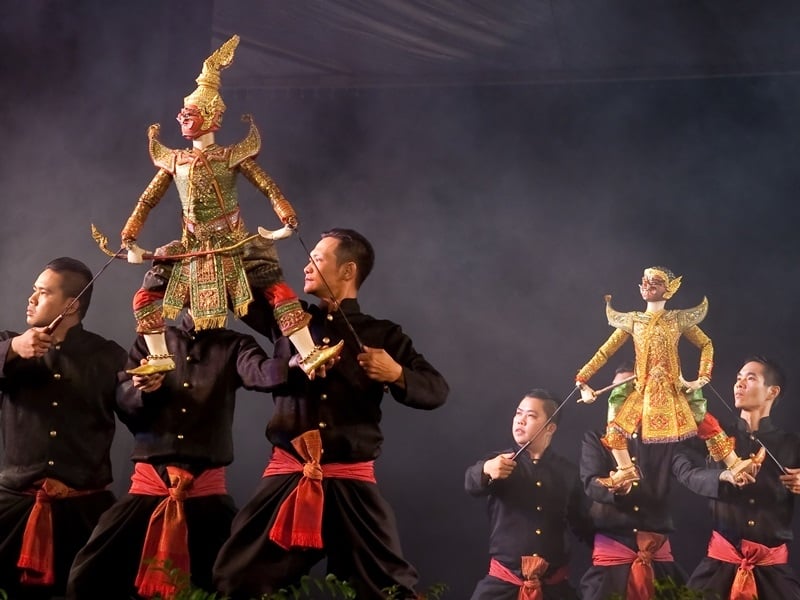Ever wondered what it would be like to step into a world of ancient artistry and tradition? Well, hold on to your seat because we’re about to dive into the captivating realm of Thai puppetry! This enchanting form of storytelling has a history that dates back centuries, and it continues to amaze and inspire audiences to this day. So, get ready to be transported to a world filled with intricately crafted puppets, mesmerizing movements, and stories that will leave you wanting more. In this article, we’ll explore the art and tradition of Thai puppetry in more detail, giving you a glimpse into its rich heritage and immersing you in an age-old tradition that is sure to leave you spellbound.
Thai puppetry, or ‘Hun Krabok’ as it is known in the local language, is a vibrant art form that has been passed down through generations. Just imagine sitting in a dimly lit theater, surrounded by the soft strains of traditional Thai music, as intricately designed puppets come to life before your eyes. These exquisitely crafted puppets, made from buffalo hide or cowhide, are brought to life by skilled puppeteers who masterfully manipulate their movements, creating an unforgettable visual experience. But Thai puppetry is more than just an art form; it is a cultural expression that reflects the values, beliefs, and stories of the Thai people.
Intrigued? Well, get ready to immerse yourself in the captivating world of Thai puppetry. We’ll take a closer look at the history of this ancient tradition, explore the techniques and craftsmanship behind the puppets, and delve into the stories and themes that have been passed down through generations. From epic tales of gods and goddesses to folk stories and moral lessons, Thai puppetry has it all. So, join us on this journey as we unravel the mysteries and beauty of this age-old tradition. Your love for Thai culture will never be the same again!
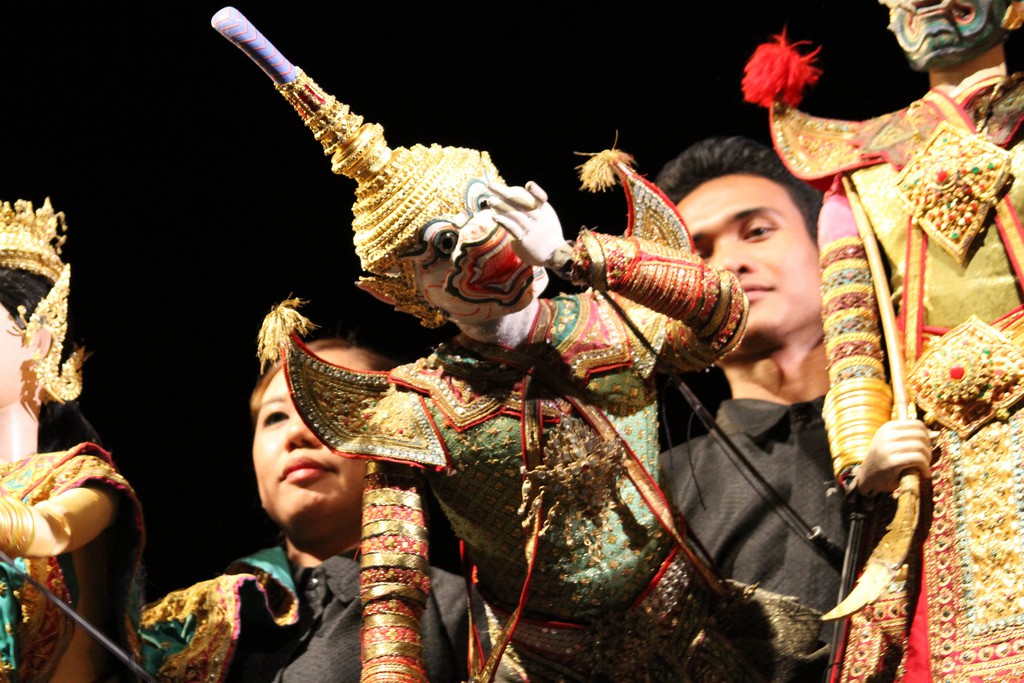
History of Thai Puppetry
Origins of Thai Puppetry
Thai puppetry, also known as Hun Krabok, has a rich history that dates back centuries. The origins of this art form are believed to have stemmed from the ancient Hindu and Buddhist stories that were brought to Thailand by Indian and Khmer traders. These stories were performed through various forms of visual arts, including puppetry.
Evolution of Thai Puppetry
Over time, Thai puppetry evolved and developed its unique style and techniques. Influenced by the traditional performing arts of Thailand, such as dance and drama, puppetry became an integral part of Thai culture. The art form began to incorporate elements of Thai folklore, mythology, and history, creating vibrant and engaging performances.
Influence on Thai Culture
Thai puppetry has played a significant role in Thai culture, serving as a means to transmit cultural values, traditions, and historical knowledge from one generation to another. It has been instrumental in educating and entertaining audiences, offering a window into the rich cultural heritage of Thailand.
Types of Thai Puppets
Shadow Puppets
Shadow puppets, known as Nang Yai, are one of the oldest forms of Thai puppetry. These puppets are made from cowhide or buffalo hide, intricately carved and painted. The puppets are operated behind a translucent screen, with a light source casting their shadows onto the screen, creating a mesmerizing visual spectacle.
String Puppets
String puppets, known as Nang Talung, are smaller in size and are operated using strings attached to various parts of the puppet’s body. These puppets are made from buffalo hide, beautifully decorated, and often adorned with traditional Thai costumes. The puppeteers manipulate the strings to create graceful movements and bring the puppets to life.
Rod Puppets
Rod puppets, known as Hun Luang, are operated using rods that are connected to the puppet’s limbs. These larger-than-life puppets are made from wood, painted with vibrant colors, and adorned with intricate details. The puppeteers control the puppets by moving the rods, allowing for expressive gestures and movements.
Glove Puppets
Glove puppets, known as Hun Lakhon Lek, are operated using the puppeteer’s hands, with each finger controlling a specific part of the puppet’s body. These puppets are made from various materials, including cloth and leather, and are often used in comedic performances, captivating audiences with their humorous antics.
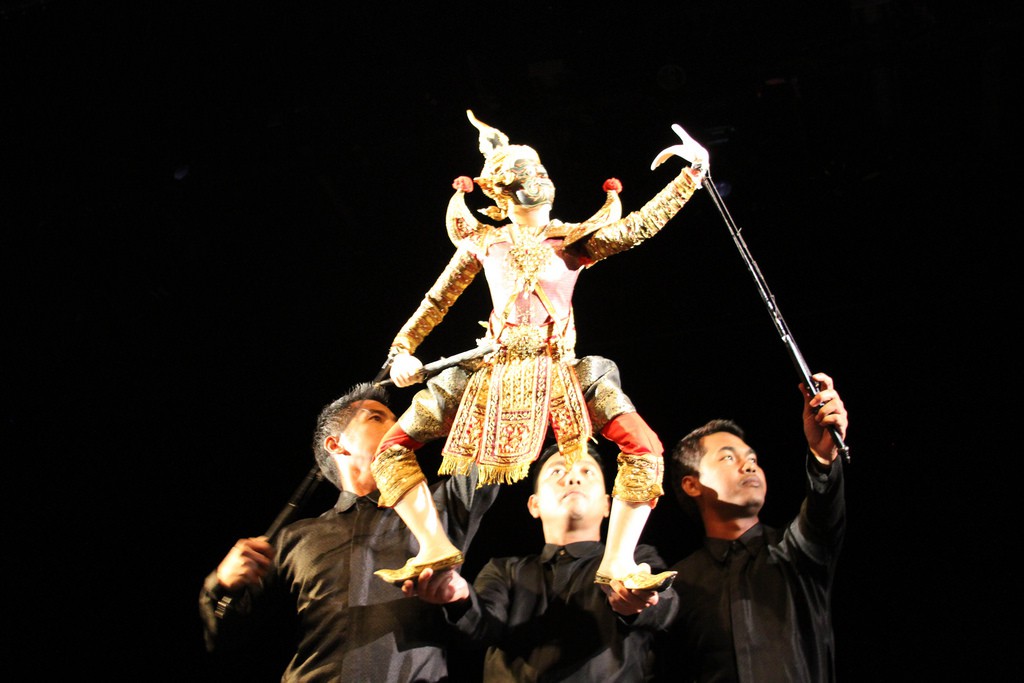
Materials Used in Thai Puppetry
Leather
Leather is a commonly used material in Thai puppetry, particularly for shadow puppets. The cowhide or buffalo hide is carefully treated, carved, and painted to create intricate puppet designs.
Wood
Wood is another prevalent material used in Thai puppetry, particularly for rod puppets. The puppets are carved from various types of wood, such as teak and mahogany, and then painted with vibrant colors and decorative details.
Fabrics
Fabrics, such as silk and cotton, are commonly used in Thai puppetry to create traditional costumes for the puppets. These fabrics are often adorned with intricate embroidery and embellishments, adding to the overall visual appeal of the performances.
Decoration and Accessories
In addition to leather, wood, and fabrics, Thai puppets are often decorated with various materials and accessories. These can include gold leaf, sequins, beads, and small ornaments. These decorative elements enhance the aesthetic value of the puppets, making them visually stunning and captivating.
Thai Puppetry Performances
Traditional Theatre Settings
Thai puppetry performances traditionally take place in a dedicated puppet theatre, known as Sala Buan. These theatres are designed with specific features to accommodate puppetry performances. The stage is elevated, and the puppeteers operate the puppets from behind the stage, hidden from view. The audience sits facing the stage, immersed in the enchanting world of Thai puppetry.
Performance Techniques
Thai puppetry involves a range of performance techniques that showcase the skill and artistry of the puppeteers. These techniques include intricate puppet manipulation, expressive movements, and coordination between the puppeteers. The performances are accompanied by traditional music and vocals, adding depth and emotion to the storytelling.
Narrative Themes and Stories
Thai puppetry performances often revolve around traditional stories, myths, and legends from Thai history and folklore. These stories explore themes of love, bravery, and morality, imparting wisdom and cultural values to the audience. The narratives are carefully crafted, combining drama, humor, and action to captivate and entertain viewers.
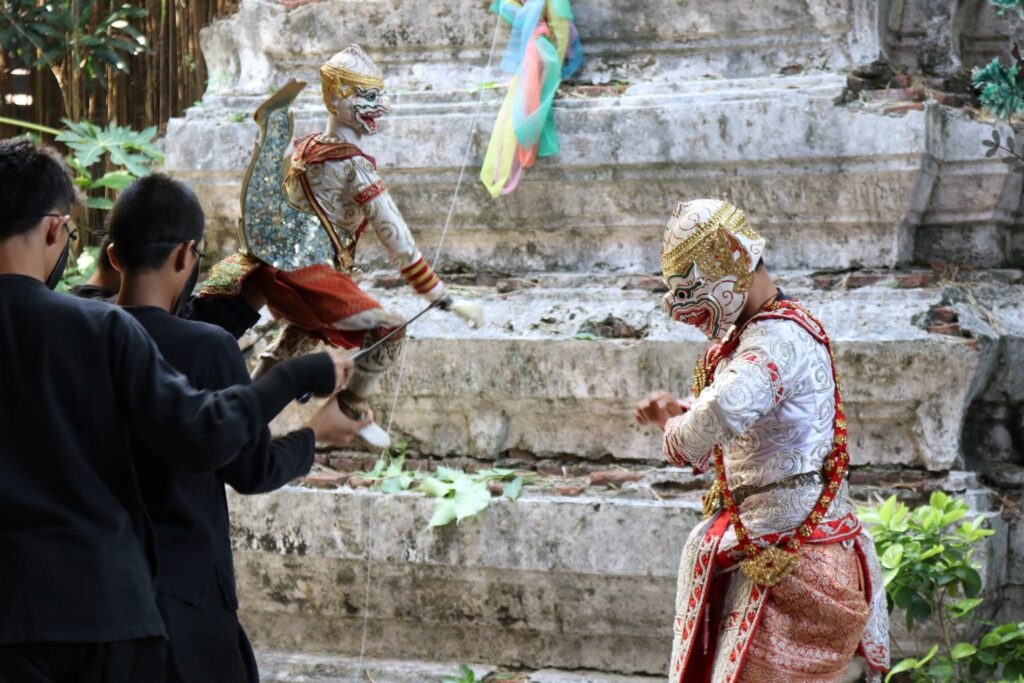
Puppeteers and Skills
Training and Apprenticeships
Puppeteers in the Thai tradition undergo rigorous training and apprenticeships to master the art of puppetry. They learn from experienced puppeteers, practicing the techniques of puppet manipulation, vocal skills, and coordination. This traditional form of training ensures the preservation of the art form and the passing down of knowledge from one generation to the next.
Puppet Manipulation Techniques
Thai puppeteers possess exceptional skills in puppet manipulation. They seamlessly control the movements of the puppets, using various techniques such as string pulling, rod manipulation, and hand gestures. These techniques allow the puppeteers to create lifelike movements and convey emotions through the puppets.
Voice and Music Skills
In addition to puppet manipulation, Thai puppeteers also develop their voice and music skills. They use their voices to bring the characters to life, speaking and singing in different tones and pitches to convey their emotions. The puppeteers also play traditional instruments, such as the khene or the ranat ek, adding depth and atmosphere to the performances.
Cultural Significance of Thai Puppetry
Religious and Spiritual Context
Thai puppetry has deep roots in the religious and spiritual beliefs of Thailand. It is often performed during religious ceremonies and festivals, serving as a form of spiritual offering. The performances depict mythological and religious stories, connecting the audience to their cultural, spiritual, and ancestral heritage.
Celebrations and Festivals
Thai puppetry is an integral part of many celebrations and festivals throughout Thailand. It is performed during important events, such as the Thai New Year (Songkran) and the Loy Krathong festival. The performances bring communities together, fostering a sense of unity and shared cultural identity.
Transmission of Wisdom and Values
Thai puppetry serves as a powerful means of transmitting wisdom, values, and cultural traditions. Through engaging narratives and captivating performances, the art form educates the audience about important cultural and moral lessons. It sparks curiosity, ignites imagination, and encourages reflection on the values that shape society.
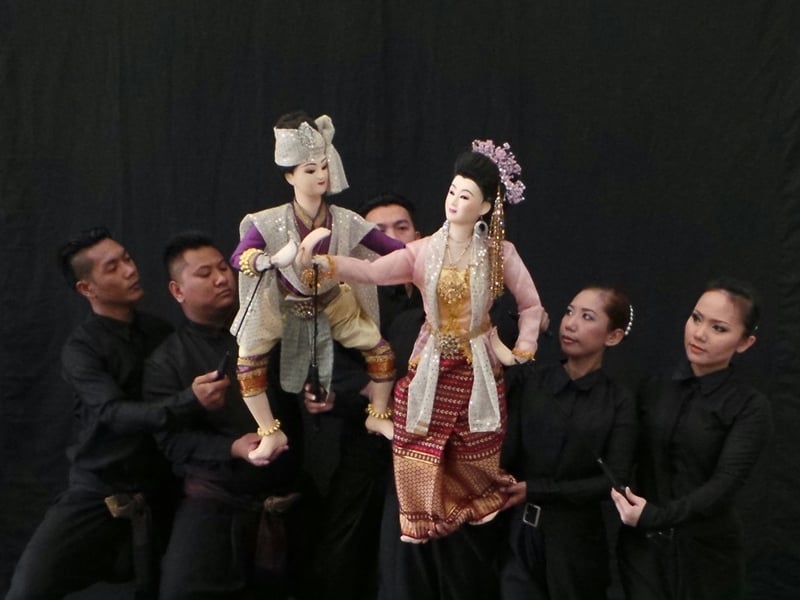
Regional Variations in Thai Puppetry
Northern Thai Puppetry
Northern Thai puppetry, also known as Nang Glong, is predominantly performed in the northern region of Thailand. The puppets used in this style are elaborate and often interact with performers wearing masks. Northern Thai puppetry combines elements of dance, music, and storytelling, creating a unique and vibrant performance.
Southern Thai Puppetry
Southern Thai puppetry, known as Hun Mahorathi, is a distinct form of puppetry found in the southern region of Thailand. The puppets used in this style are known for their intricate designs and movements. Southern Thai puppetry often includes comedic elements and social satire, entertaining audiences with its humor and wit.
Central Thai Puppetry
Central Thai puppetry, known as Nang Yod, is the most prevalent form of puppetry in Thailand. This style combines elements from various other regional styles, showcasing a diverse range of techniques and skills. Central Thai puppetry performances often feature complex narratives and employ different types of puppets, creating a dynamic and varied experience.
Challenges and Preservation Efforts
Modern Challenges
Like many traditional art forms, Thai puppetry faces several challenges in the modern era. The rise of digital entertainment and changing audience preferences has led to a decline in interest and appreciation for this ancient art form. Additionally, the lack of financial support and resources can make it challenging for puppeteers to practice and preserve their craft.
Education and Awareness Campaigns
To address these challenges, various education and awareness campaigns have been initiated to promote the art of Thai puppetry. Educational institutions, cultural organizations, and government agencies collaborate to provide training programs, workshops, and performances to educate the public about the significance of this art form.
Government Support
The Thai government has also recognized the importance of preserving and promoting traditional arts, including puppetry. They provide funding and support for puppetry festivals, performances, and workshops. By actively engaging in preservation efforts, the government strives to ensure the survival and continuation of this cherished art form.
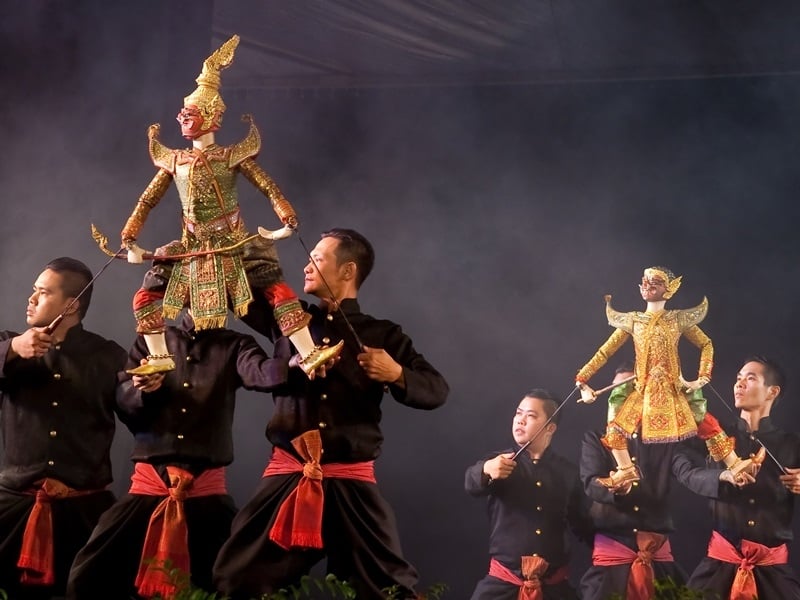
Visiting Thai Puppetry Venues
Top Puppetry Theaters in Thailand
If you’re interested in experiencing the magic of Thai puppetry, there are several renowned puppetry theaters in Thailand that are worth visiting. The Joe Louis Puppet Theater in Bangkok and the Joe Louis Puppetry Village in Ayutthaya are both known for their traditional performances, showcasing the beauty and artistry of Thai puppetry.
Interactive Puppet Workshops
For a more immersive experience, you can also participate in interactive puppet workshops. These workshops provide hands-on training in puppet manipulation techniques, allowing you to learn from experienced puppeteers and try your hand at bringing the puppets to life. It’s a fun and educational activity that offers a deeper understanding of the art form.
Puppetry Museum Collections
For those interested in the history and evolution of Thai puppetry, there are several puppetry museums in Thailand that house impressive collections of puppets and artifacts. The Thai Puppet Museum in Bangkok and the Traditional Thai Puppetry Museum in Phra Nakhon Si Ayutthaya provide a comprehensive look into the artistry and cultural significance of Thai puppetry.
Conclusion
Thai puppetry is more than just a form of entertainment. It is a vibrant and dynamic art form that embodies the cultural heritage and traditions of Thailand. From its ancient origins to its evolution and regional variations, Thai puppetry continues to captivate audiences with its immersive performances and rich storytelling. By appreciating and preserving the legacy of Thai puppetry, we can ensure that this age-old tradition remains an integral part of Thai culture for generations to come.
